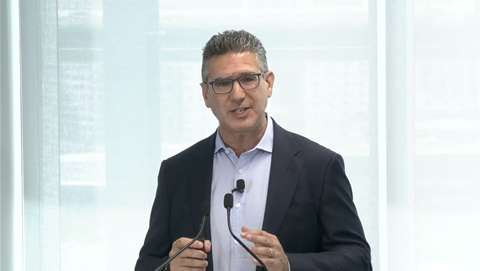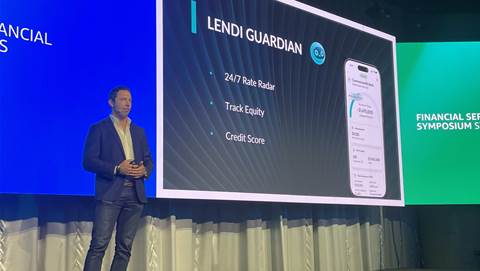Generative AI has put the internet into a frenzy, ChatGPT has shaken the boots of every copywriter through its intuitive writing software, an AI-generated piece of artwork won at the Colorado State Fair and there is a fake Tom Cruise floating around the internet.

Generative AI isn't a new concept by any means but ChatGPT has catapulted the conversation of this technology into the minds of business leaders.
While those examples might be a good indication of how the technology works, or alternatively, how it shouldn’t be used, generative AI is a tool that could be taken advantage of by organisations.
According to Gartner, generative AI learns from existing content artefacts to generate new, realistic artefacts that reflect the characteristics of the training data, but do not repeat it.
Generative AI can produce a variety of novel content such as images, video, music, speech, text, software code and product designs.
Generative AI isn't seen as discriminatory as it is forced to make conclusions and draw inferences from datasets based on a limited number of parameters given to them during training, according to Lexology.
But there is more to generative AI than just creating wacky, absurd pictures. Sri Annaswamy, founder and director of AI advisory group Swamy and Associates told Digital Nation Australia that generative AI is far more powerful in a business context than most people realise.
“For the first time, you can simulate things and create twins of what has been happening in your real physical systems in a believable manner, in a manner that you can see,” he explained.
“For example, right now Google search uses discriminatory inverted. If you can just say what you want [with generative AI], it searches quickly using ChatGPT, or a similar next generation of the GPT AI, [it's] very powerful.”
Use cases
Generative AI could be used in a wide range of industries like engineering, Annaswamy said. For instance, it could be used to find a blockage in a pipeline whilst the pipeline is being built.
In the face of third-party data deprecation, generative AI can help to identify the core characteristics of customers and target them with custom content in a privacy-compliant way, according to Gartner.
It can also be used to train media buying models to avoid risky content like misinformation and deepfakes.
Adopting it in organisations
Annaswamy gives three tips for organisations that want to implement generative AI into their workplaces.
Firstly, he said leaders should sit down with an expert to understand how the software works.
“Understand what generative AI is, and how it is different from traditional discriminatory AI. Generative AI is completely different, it's a reversal of a process. They have to understand that and then everything else follows from that,” he said.
Secondly, identify specific areas in your organisation which can benefit from simulations.
Annaswamy said, “That's the easiest place to start using generative AI. There is no point in using generative AI in mortgage applications because it's a traditional process. It hasn't benefited from simulation before.”
Instead, look at areas where simulations can flourish like cybersecurity, fraud, marketing and sales campaigns.
“These are all places where you can benefit from simulation in a relatively cheap manner. Even before you get to the market, you can actually test out all the features using generative AI,” he said.
Thirdly, make sure businesses identify potential for biases in existing AI and see if they can use generative AI there.
"If they get these three things right in the next 24 or 36 months, they will be well on the way to reaping most of the benefits of generative AI," he ended.
Manage it like an enterprise application
Generative AI has enormous potential but organisations need to manage it like any other enterprise application according to Rowan Curran, an analyst at Forrester.
He said, “It’s important to remember that if generative AI makes things easier, it also makes doing bad things easier. The challenges created by coherent nonsense means that we need, more than ever, to maintain proper enterprise workflows and governance around AI-generated content to ensure that it has the accuracy and integrity that one would expect from any other enterprise software.”
Curren noted that while orchestrating enterprise processes with generative AI may feel onerous — especially given how quickly we can generate AI text and images — it will help teams avoid getting their fingers burned by releasing something into production that may have massive unintended consequences (e.g., Meta’s recent results with its controversial Blender AI bot).
“The risk goes beyond reputation — one could easily see a user asking ChatGPT for health advice and getting back suggestions that would make them sicker if there were no controls or guardrails on the use of the model,” he added.
An 'inclusive technology'
Global research initiative by the Alibaba DAMO Academy has said that generative AI is expected to make further strides with its growing applications set to transform how digital content is produced.
The research initiative called generative AI an “inclusive technology” aided by future technological advancements and cost reductions. Generative AI will become an inclusive technology that can significantly enhance the variety, creativity and efficiency of content creation, according to DAMO.
In the next three years, the research predicts that we will see business models emerging and ecosystems maturing as generative AI becomes widely marketed. Generative AI models will be more interactive, secure, and intelligent, assisting human beings to complete various creative work.
Annaswamy agrees that it has the potential to be inclusive because “we can create things that didn't exist before”.
He said, “We don't have to go looking for things that already exist. We can create things that didn't exist before, in that sense, it's absolutely inclusive.
“But the big problem is, we can also be manipulated to only focus on specific things that reinforce our prejudices, something that we have to consciously work to avoid, but it has the potential to be very inclusive.”
Coming soon to an organisation near you
Generative AI is already getting organisations excited and Annaswamy said the implementation of it in Australian organisations should be seen in about 12 to 18 months.
“I would expect, say at least two or three companies to really go full steam. If I had to put my money, probably a CBA, Telstra or Lendlease,” he explained.
Dan Canham, head of strategy and innovation at Resolution Life said the adoption of generative AI by organisations will be swifter than other technologies like blockchain or VR.
“They've been very slow to adapt from a business point of view, but something like generative AI, [the adoption] it's going to happen this year, if not, into next year as well,” he said.
Taz Papoulias, head of media at Murmur-group.com noted some of the major impacts generative AI can have on an organisation include reduced time, reduced cost and increased profit. But the biggest impact will be market shrinkage.
He said, “Savvy businesses who understand that content is king and their biggest cost and 'pain point' will catch on that they can use AI and bring content in-house, only requiring editing and final version tweaks. This will devalue the bulk of the content market who only require low-mid content requirements.”
This new piece of technology opens so many new doors for organisations but Canham said sooner or later legal will have to enter the conversation.
He explained, “The interesting thing is going to be what are the legal and risks [departments] going to say about the use of generative AI and ChatGPT across the corporate space because I know everything we do has to go through legal. Everything gets written and produced so well, they [might] now have to say 'ChatGPT helped me produce this'.
“That's going to be a really interesting discussion. People always use Google searches and they use other formats. But is this just going to be another one of those tools that our colleagues are using.”



_(5).jpg&h=140&w=231&c=1&s=0)





.png&w=100&c=1&s=0)

 iTnews Benchmark Security Awards 2025
iTnews Benchmark Security Awards 2025
 Digital Leadership Day Federal
Digital Leadership Day Federal
 Government Cyber Security Showcase Federal
Government Cyber Security Showcase Federal
 Government Innovation Showcase Federal
Government Innovation Showcase Federal
 Digital NSW 2025 Showcase
Digital NSW 2025 Showcase












_(1).jpg&h=140&w=231&c=1&s=0)



